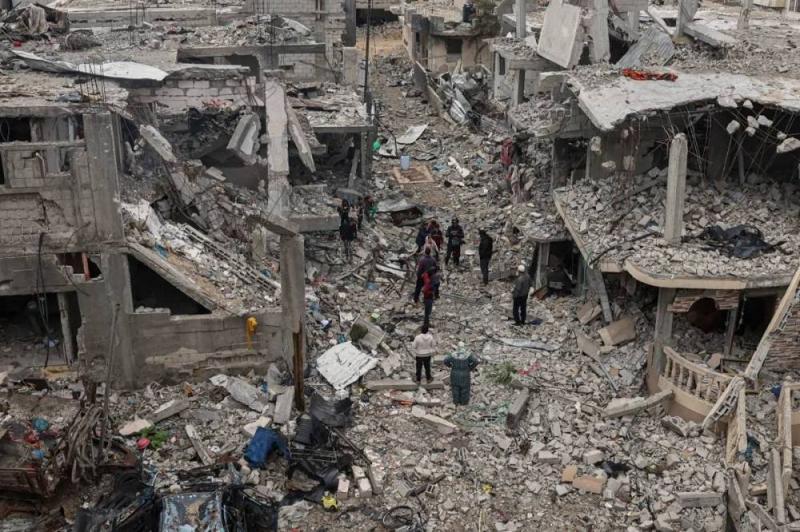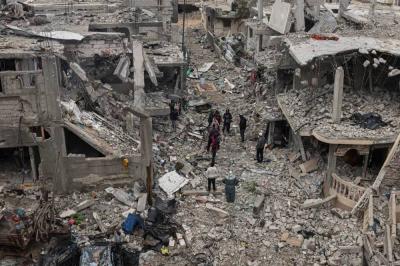The United Nations Environment Programme revealed today, Monday (July 15, 2024), that there are 40 million tons of rubble in Gaza, noting that its removal will take 15 years. According to a report by the UN program, a UN assessment found that a fleet of over 100 trucks will take 15 years to clear Gaza of about 40 million tons of debris, with costs ranging between 500 and 600 million dollars.
The report explained that these findings highlight the enormous challenge of rebuilding Palestinian territories after months of devastating Israeli attacks that led to massive destruction of homes and infrastructure. It continued, stating that 137,297 buildings in Gaza have been damaged, which is more than half of the total number, among which slightly over a quarter were completely destroyed, about one-tenth suffered severe damage, and a third incurred moderate damage. It also indicated that large waste disposal sites covering between 250 and 500 hectares will be necessary for debris disposal, depending on the amount that can be recycled.
In May, the United Nations Development Programme stated that the reconstruction of homes in Gaza destroyed during the war could take until 2040 in the most optimistic scenario, with the total reconstruction cost across the sector reaching up to 40 billion dollars. This assessment, published as part of a fundraising campaign for early planning for Gaza’s rehabilitation, also found that the conflict could reduce health, education, and wealth levels in the sector to 1980 levels, erasing 44 years of development.
The report mentioned that no building in Khan Younis, south of Gaza City, was left undamaged. It added, "The actual terrain has changed. There are hills where there was once nothing. The 2,000-pound bombs dropped by Israel have altered the real landscape." Schools, health facilities, roads, sewage systems, and all other vital infrastructure have suffered severe damage.
The United Nations Development Programme indicated that the potential cost of rebuilding Gaza is now double the estimates made by UN officials and Palestinians in January and is increasing every day. In April, the former head of the United Nations Mine Action Service in Iraq, Per Ludhamar, stated that approximately 10% of munitions, on average, did not explode upon release and had to be removed by demining teams. He concluded that 65% of the destroyed buildings in Gaza were residential, adding that clearing and rebuilding them will be a slow and dangerous task due to the threat posed by munitions or other buried weapons in collapsed or damaged buildings.




